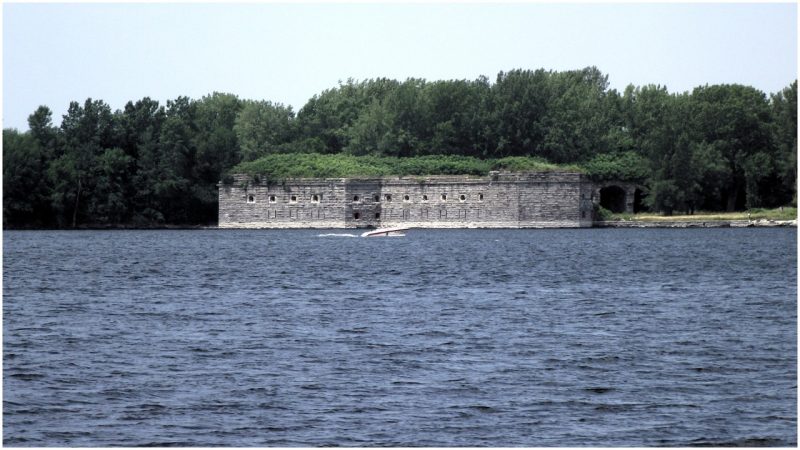At Lake Champlain in New York State stands an unintended monument to human error. Welcome, friends and foes, to the site of Fort Blunder.
The massive three-story stone structure, now crumbling near the U.S.-Canada border, was officially named Fort Montgomery during its construction. It marks the attempt by U.S. forces to try to button down the northern border after a series of British invasions in the War of 1812.
So what went wrong? An important detail.
In spite of the intensive strategic planning that went into its construction, the original fort was more than a half-mile on the wrong side of the border. Surveyors discovered the error, but only after President James Monroe personally visited to see how the work was coming along. The 1783 Treaty of Paris had set the 45th parallel as the basis for the border with Quebec; the builders knew that–they just had a mistaken notion of where that parallel ran.
And so construction, which began in 1816, came to an abrupt halt in 1818. Locals hauled off many of the finely quarried stones for their own use and the site was abandoned. Around 25 years later, in a feat of border bending, the U.S. and Britain came to terms on a number of border disputes with an 1842 treaty.
The U.S. returned to the site and, in 1844, resumed construction with fervor. Although the earlier fort had not been named, it was decided the latest edition would be Fort Montgomery to honor Richard Montgomery, a slain hero of the American Revolution.
The five-cornered structure was built out of slabs of the same Vermont limestone used in later construction of the Brooklyn bridge and Radio City Music Hall. The number of stonemasons involved is estimated at 400.
The finished fort was a menacing three stories high with gun portals and cannon braces above, surrounded by a moat and touted two drawbridges. The thick walls enveloped dozens of brick fireplaces and officers’ quarters that were built for gentlemen: spiral staircases, arched ceilings, and marble mantles.
“It was, it is, truly magnificent,” Vermont author James Millard told the Toronto Star. The historian has written extensively on both forts on the site, but he’s quick to point out the first fort–not the second–was the actual blunder.
Still, all the might and magnificence of Fort Montgomery seems to have been largely for naught. Finished around 1870, its presence was a comfort during the Civil War. The Union feared the British might join forces with the Confederates and invade from the north for yet another stab at colonization. A detachment of the 14th U.S. Infantry was garrisoned at the fort for several months in 1862. The Confederates, in fact, did make a stab at the north from Canada, slipping into Vermont in 1864 in the St. Albans Raid.
The fort, however, was considered more of a deterrent than an active base. Its guns were removed after the turn of the century, and it was sold at auction in 1926.
It’s up for sale again, but even at a fire-sale price of just below $3 million for the historical structure and 94 acres on the lake, there have been no takers. A big part of the problem is the condition of the place. Teens, biker gangs, and others have covered its walls with graffiti–and that’s the least of the problems. During World War II, iron support rods for the massive stone walls were pulled for scrap value during the war effort. As a result, some walls have given way and others are threatening to.
In 2008, the Preservation League of New York State listed the fort as one of their “Seven to Save” properties and also noted that the ruins are in dire need of stabilization and preservation.
Terri Likens‘ byline has appeared in newspapers around the world through the Associated Press. She has also done work for ABCNews, the BBC, and magazines that include High Country News, American Profile and Plateau Journal. She lives just east of Nashville, Tenn.
